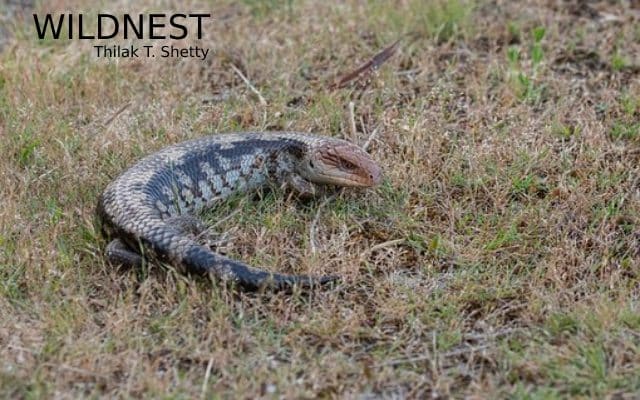Skinks are lizards belonging to the family Scincidae, species of lizards, mostly secretive ground dwellers or burrowers, that are represented throughout most of the world but are especially diverse in Southeast Asia and its associated islands, the deserts of Australia.
The bodies of skinks are typically cylindrical in cross section, and most species have cone-shaped heads and long, tapering tails. Most species of skinks have no pronounced neck and relatively small legs. Several genera have no limbs at all. These lizards also have legs that are relatively small proportional to their body size. Skinks’ skulls are covered by substantial bony scales, usually matching up in shape and size, while overlapping. Most species of skinks have long, tapering tails they can shed if predators grab onto them. Such species generally can regenerate the lost part of a tail, though imperfectly. A lost tail can grow back within around three to four months. Species with stumpy tails have no special regenerative abilities. Skinks in the genus Prasinohaema have green blood because of a buildup of the waste product biliverdin.
A trait apparent in many species of skink is digging and burrowing. Many spend their time underground where they are mostly safe from predators, sometimes even digging out tunnels for easy navigation. They also use their tongues to sniff the air and track their prey. When they encounter their prey, they chase it down until they corner it or manage to land a bite and then swallow it whole. They can be voracious hunters. Skinks are generally carnivorous and insectivorous.
Most species of skinks are oviparous, laying eggs in clutches, some 45% of skink species are viviparous in one sense or another. Many species are ovoviviparous, the young developing lecithotrophically in eggs that hatch inside the mother’s reproductive tract, and emerging as live births.
Skinks typically seek out environments protected from the elements, such as thick foliage, underneath man-made structures, and ground-level buildings such as garages and first-floor apartments. When two or more skinks are seen in a small area, it is typical to find a nest nearby. Skinks are considered to be territorial and often are seen standing in front of or “guarding” their nest area.
kinks are very specific in their habitat as some can depend on vegetation while others may depend on land and the soil. As a family, skinks are cosmopolitan; species occur in a variety of habitats worldwide, apart from boreal and polar regions. Various species occur in ecosystems ranging from deserts and mountains to grasslands.
Many species are good burrowers. More species are terrestrial or fossorial (burrowing) than arboreal (tree-climbing) or aquatic species. Some are “sand swimmers”, especially the desert species, such as the mole skink or sand skink in Florida. Some use a very similar action in moving through grass tussocks. Most skinks are diurnal (day-active) and typically bask on rocks or logs during the day.
Skinks have also contributed greatly to the understanding of reptile reproduction. Although most skink species deposit their eggs in nests and then abandon them, many are live-bearers (viviparous). Among the live-bearing species are some that have developed a complex placenta for transferring nutrients directly to the developing offspring. In one skink, the South American species M. heathy, the placenta is as developed and complex as that found in mammals.

















